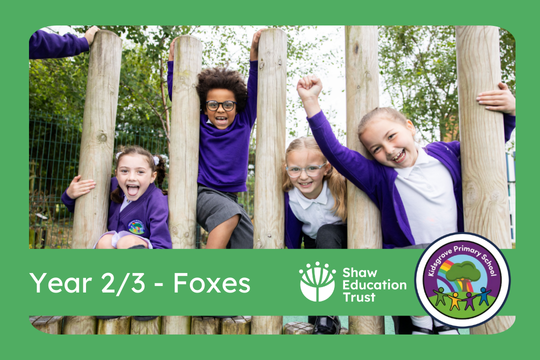
Summer 2, Week

Foxes class have made a fantastic start to the final half term of the year. The children have returned to school even more eager and determined to show their fantastic learning. Take a look at what they have been up to this week!
Science - Habitats and Homes
In science this week, Foxes have explored the perfect conditions needed for an allotment. Understanding that allotments are places where flowers and crops can be grown, the children discussed how it was important for these spaces to have lots of sunlight, access to water and a place to store tools. They also explored threats faced by allotments which include insects and birds. Using birds as the main threat, the children learnt about decorations called 'bird scarers', using this new learning to design their very own that could be used to protect these spaces.


History - The Stone Age
This week in history, Foxes have explored significant landmarks created by our ancestors in the Stone Age. First exploring mounds, which look very similar to hills, the children discussed how and why these might have been built. They were also able to explore Stonehenge and how there are many questions that cannot be answered about this mysterious landmark.
''Mounds were used to show their power.'' - Ayrton
''People thought that the sun and moon had special powers and they created Stonehenge.'' - Brogan



Writing - The Tempest
In writing this week, Foxes class have been introduced to a next text. Rewritten by Rosie Dickins, The Tempest is a play originally written by William Shakespeare, exploring freedom and forgiveness. To begin their learning, the children were engaged in the plot of the text by listening to the sounds of a stormy sea. Using adjectives to create expanded noun phrases, the children what they would be able to hear, see, touch, taste and smell if aboard the ship.


Later in the week, the children used their prediction skills to think about three key questions. Only looking at the front cover and what could be seen, the children thought about who the characters were, where the story was set and what the characters were doing. Discussing these questions using evidence to support their predictions, the children wrote these before reading the first chapter to see how accurate they were.
''I predict that the story is set on the sea because it looks like there are big waves in the background.'' - Joshua
''I think that the character is an angel because they are wearing all white.'' - Esme



Computing - The International Space Station
In computing this week, Foxes have explored the purpose of the International Space Station (ISS). Learning that the ISS is a huge satellite that orbits the Earth where astronauts live and work to research what happens in space, the children were able to explore live maps which show the inside of the satellite. Using digital maps, the children could explore the modules which make up the satellite and learn more about the equipment on board and their function.



Art - Life in Colour
This week in art, Foxes class have explored different methods that can be used to create artwork and show how colours can mix. Using watered down paints and straws, the children created pieces of art by blowing the paint to create different shapes and colours. Blowing the paint in different directions, everyone showed fantastic control and imagination to create their designs.



Reading - Supertato
In reading this week, Foxes class have read a new story called 'Supertato: Books are rubbish'. Throughout the week, the children have read the text as a whole class, with a partner and independently to support their understanding of the plot and improve their reading fluency and comprehension. After reading the text and identify our four focus words, the children used their retrieval skills to find and highlight answers related to different parts of the story.


RE - Ceremonies (Hindu Wedding)
In RE this week, Foxes class have learnt about a new ceremony that is important in another religion. Learning all about a Hindu wedding, the children explored key parts of this ceremony which include applying henna patterns, clothing worn by the bride and the groom, the canopy in which the ceremony takes place and significant blessings from the families. Looking at a traditional setting for this ceremony, the children labelled key features which can be found which include garlands, flowers, the sacred fire and a mangala. After labelling the setting, the children put themselves into the shoes of someone attending this ceremony, thinking about what they would be able to hear, see, smell, taste and touch at this event.


